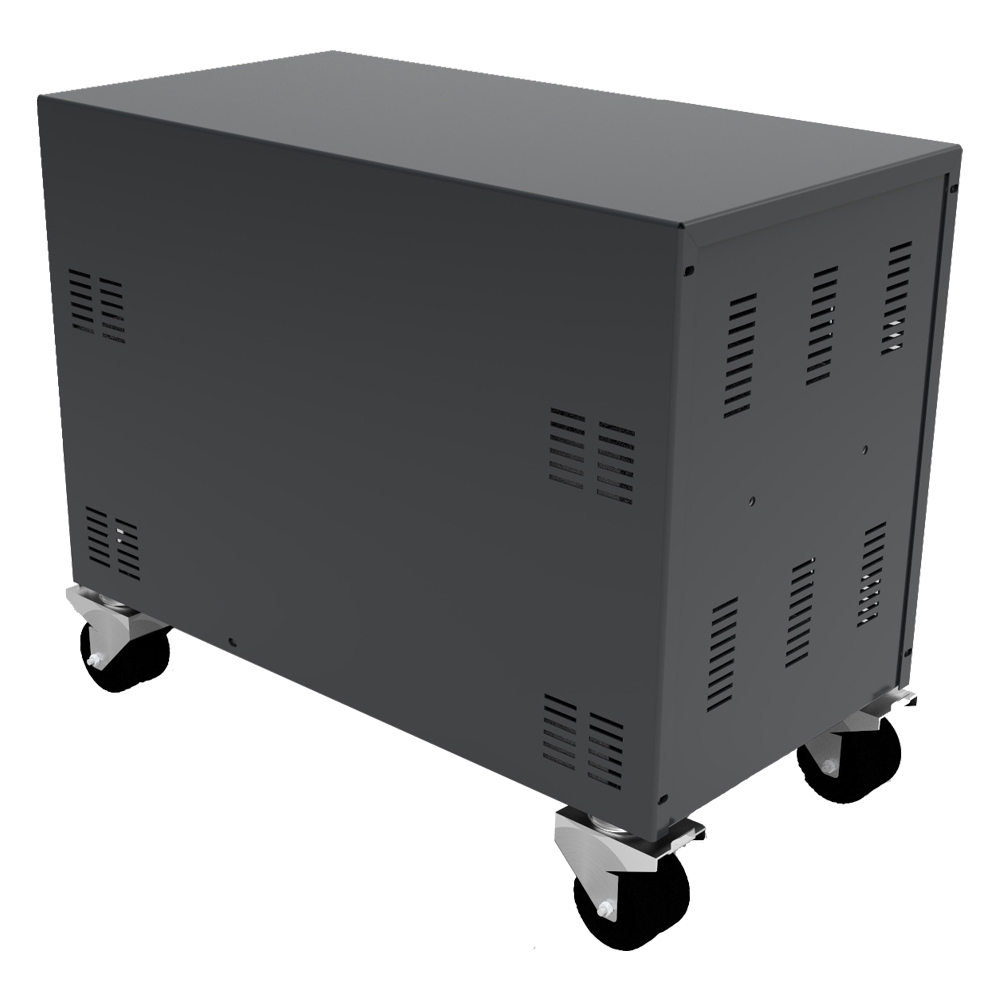External Battery Cabinet With Batteries
- Extended Battery Capacity for UPS systems.
- Compatible with UPS systems (2KVA to 10KVA or higher).
- Battery Types: Sealed Lead-Acid (VRLA) or Lithium-Ion.
- Scalable Power: Customizable configurations based on the power needs.
- Battery Monitoring System: Monitors charge levels, health, and temperature.
Product Name: External Battery Cabinet with Batteries
Part Number (PN): (Specific part number may vary based on manufacturer)
Capacity: Varies (commonly available in 2KVA, 5KVA, 10KVA, etc.)
Battery Type: Sealed Lead-Acid (VRLA), Lithium-Ion, or other depending on model
Voltage Rating: Typically 12V, 24V, or 48V
Input Voltage: Dependent on UPS system or model, typically 230V
Output Voltage: Matches the UPS system or can be configured accordingly
Battery Configuration: Multiple battery strings for extended runtime
Communication Port: RS232, USB, SNMP (depending on model)
Form Factor: Tower or Rack-mountable
Weight: Varies based on configuration (typically ranges from 15 kg to 50 kg)
Dimensions: Varies based on model
Long Description:
The External Battery Cabinet with Batteries is designed to extend the runtime of uninterruptible power supplies (UPS). These cabinets provide additional battery capacity, making them ideal for situations where the UPS needs to support larger loads or longer durations during power outages. These external battery cabinets are compatible with a variety of UPS systems, offering users the flexibility to customize their power backup solution according to the specific needs of their data centers, businesses, or critical infrastructure.
Typically used in high-demand environments such as data centers, network infrastructure, and telecommunications industries, the external battery cabinet ensures that equipment remains operational for extended periods without interruption. The cabinet houses multiple sealed lead-acid (VRLA) or lithium-ion batteries, which are both reliable and efficient. The configuration of the batteries can be scaled to support different power capacities, from 2KVA to larger systems (10KVA or higher).
The battery management systems incorporated in these cabinets monitor battery health, charge levels, and temperature, ensuring that the backup power remains efficient and reliable. Many models include advanced communication ports such as RS232, USB, or SNMP for remote monitoring, allowing IT administrators to keep track of the power system’s status from a centralized location.
Key Features:
- Extended Runtime: Increases the backup time for your UPS system to ensure equipment stays powered during long outages.
- Battery Configurations: Options to support 12V, 24V, or 48V battery systems for different power needs.
- Scalable: Expandable to meet the growing power requirements of your equipment.
- Battery Management System: Monitors the health and performance of batteries, ensuring longevity and optimal operation.
- Communication Ports: Allows integration with remote monitoring systems through RS232, USB, SNMP.
- Compatibility: Designed for use with most major UPS systems.
- Form Factor Options: Available in both rack-mountable and tower configurations, making it suitable for a variety of installation environments.
- Reliable Batteries: Sealed Lead-Acid (VRLA) or Lithium-Ion for efficient power backup.
Short Description:
- Extended Battery Capacity for UPS systems.
- Compatible with UPS systems (2KVA to 10KVA or higher).
- Battery Types: Sealed Lead-Acid (VRLA) or Lithium-Ion.
- Scalable Power: Customizable configurations based on the power needs.
- Battery Monitoring System: Monitors charge levels, health, and temperature.
Usage:
Data Center Applications:
- Purpose: Provide extended runtime during power outages to support servers, networking equipment, and storage systems.
- Benefits: Keeps critical data center operations running without interruptions, ensuring business continuity.
Telecommunications & Networking Equipment:
- Purpose: Ensure telecommunications systems and network infrastructure remain operational during power failures.
- Benefits: Protects against potential service outages and prevents damage to valuable equipment.
Small Business / Office Environments:
- Purpose: Extend backup power for essential office equipment, such as computers, routers, and phones.
- Benefits: Keeps employees productive and prevents data loss due to unexpected power cuts.
Key Considerations:
- Capacity Requirements: Choose the external battery cabinet based on the size of the UPS system and desired runtime.
- Compatibility: Ensure the external battery cabinet is compatible with the existing UPS system in terms of voltage and battery configuration.
- Installation: Can typically be installed in a rack-mounted or standalone configuration depending on space and accessibility requirements.








There are no reviews yet.